Candy CBT 62/1 AX Handleiding
Bekijk gratis de handleiding van Candy CBT 62/1 AX (10 pagina’s), behorend tot de categorie Afzuigkap. Deze gids werd als nuttig beoordeeld door 168 mensen en kreeg gemiddeld 5.0 sterren uit 84.5 reviews. Heb je een vraag over Candy CBT 62/1 AX of wil je andere gebruikers van dit product iets vragen? Stel een vraag
Pagina 1/10

WARNING
--------------------------------------------------------
The distance between the hob and the lower
part of the hood must be at least 65 cm.
The air collected must not be conveyed
into a duct used to blow off smokes from
appliances fed with an energy other than
electricity (central heating systems, ther-
mosiphons, water-heaters, etc.).
Comply with the official instructions provided
by the competent authorities in merit when
installing the disposal duct. In addition,
exhaust air should not be discharged into
a wall cavity, unless the cavity is designed
for that purpose.
The room must be well aerated in case a
hood and some other heat equipment fed
with an energy other than electricity (gas,
oil, coal heaters, etc) operate at the same
time. In fact the intake hood, disposing of
air, could create a vacuum in the room.
The vacuum should not exceed 0,04mbar.
This prevents the gas exhausted by the
heat source from being intaken again. It is
therefore advisable to ensure the room
contains air taps able to ensure a steady
flow of fresh air.
Check the data label inside the
appliance; if the symbol ( ) is printed,
read the following: this appliance has
such technical particulars that it
belongs to class II insulation, therefore
it must not be earthed.
The following warning is valid in the United
Kingdom only: as the colours of the wires
in the mains lead of this appliance may not
correspond with the coloured markings
identifying the terminals in your plug,
proceed as follows:
– the wire which is coloured blue must be
connected to the terminal which is marked
with the letter N or coloured black;
– the wire which is coloured brown must
be connected to the terminal which is
marked with the letter L or coloured red.
– terminal of a three-pin plug.
Check the data label inside the applian-
ce; if the symbol ( ) is NOT printed,
read the following: ATTENTION: This
English
appliance must be grounded.
When
making the electrical connections, check that
the current socket has a ground connection.
The following warning is valid in the United
Kingdom only: as the colours of the wires
in the mains lead of this appliance may not
correspond with the coloured markings
identifying the terminals in your plug,
proceed as follows:
– the wire which is coloured green and
yellow must be connected to the terminal
in the plug which is marked with the letter
E or by the earth symbol [ ], or coloured
green or green and yellow;
– the wire which is coloured blue must
be connected to the terminal which is
marked with the letter N or coloured black;
– the wire which is coloured brown must
be connected to the terminal which is
marked with the letter L or coloured red.
When making the electrical connections,
check that the voltage values correspond
to those indicated on the data plate inside
the appliance itself.
In case your appliance is not furnished with
a non separating flexible cable and has no
plug, or has not got any other device ensu-
ring omnipolar disconnection from the elec-
tricity main, with a contact opening distance
of at least 3 mm, such separating device
ensuring disconnection from the main must
be included in the fixed installation.
Always switch off the electricity supply before
carrying out any cleaning or servicing
operations on the appliance.
USE
--------------------------------------------------------
Avoid using materials which could cause
spurts of flame (flambées) near the ap-
pliance.
When frying, take particular care to prevent
oil and grease from catching fire. Already
used oil is especially dangerous in this re-
spect. Do not use uncovered electric grates.
To avoid possible risks of fire always comply
with the indicated instructions when cleaning
anti-grease filters and when removing
grease deposits from the appliance.
MAINTENANCE
--------------------------------------------------------
Thorough servicing guarantees correct and
long-lasting operation.
Particular care must be paid to the anti-
grease filters which must be periodically
cleaned in relation to use (at least once
every two months). Remove the anti-
grease filters and wash them either by
hand or in the dishwasher using neutral
detergent. To take off the anti-grease filters:
at the handle, push the stop inwards and
pull the filter downwards (Fig.3); open the
trolley and take off the other filter doing the
same.
Any fat deposits should be removed from
the appliance periodically depending on
amount of use (at least every 2 months).
Avoid using abrasive or corrosive products.
To clean painted appliances on the outside,
use a cloth dipped in lukewarm water and
neutral detergent. To clean steel, copper
or brass appliances on the outside, it is
always best to use specific products,
following the instructions on the products
themselves. To clean the inside of the
appliance, use a cloth (or brush) dipped in
denatured ethyl alcohol.
DESCRIPTION
--------------------------------------------------------
The appliance can be a filtering version one,
a ducting version one or with an external
motor.
In the Filtering version (Fig. 1), the air and
vapours conveyed by the appliance are depu-
rated by charcoal filter and recirculated around
the room. ATTENTION: Using the hood as a
filtering one it is necessary to use the char-
coal filter that purifies the air sent back into
the room.
In the Ducting version (Fig. 2), cooking va-
pours and odours are conveyed straight out-
side by a disposal duct which passes through
the wall/ceiling. Use of charcoal filter is there-
fore unnecessary.
In the version with an External motor (Fig.
3), the appliance must be connected to an
ducting apparatus/motor which works on its
own using the appliance as a union for the air
to be scavenged. Use only motors pro-
posed in the original catalogue.
According to the model you have bought, the
appliance can include 1 or 2 motors. In the I
motor version the flange for the air to be
exhausted has not got a central position, but
it is slightly on the left.
INSTALLATION
--------------------------------------------------------
Before assembling, in order to manoeuvre the
appliance more easily, take off the anti-grease
filters: at the handle, push the stop inwards
and pull the filter downwards (Fig. 4); open the
trolley and take off the other filter doing the
same.
IMPORTANT: So as not to damage your
product, during installation USE ONLY THE
SCREWS PROVIDED. Make sure these are
used as shown in the following
instructions.
To compensate possible depth voids be-
tween the appliance and the wall, a plastic
SPACING BAR to be fixed at the back of
the appliance by means of the three
screws A is included (Fig. 5). The 3 screws
A to be used are contained in the acces-
sory bag attached to the plastic spacing
bar. Cut the spacing bar according to the
distance to be adjusted.
Assembly under a pensile cupboard
The following operations are essential for
assembly:
– Install the wiring system
– Prepare the air venting hole if your
appliance is to be installed in the ducting
version or in the version with an external
motor.
In the Ducting version and in the version with
an External motor, to get optimal conditions
the air venting pipe should:
– be as short as possible.
– have the lowest number of bends (max
bende angle: 90°).
– be made of material approved by local
authorities (according to the State).
– have its inner side as regular and smooth
as possible.
It is moreover recommended to avoid drastic
changes of pipe cross section (recommended
diameter: 125 mm).
Fixation as indicated in Fig. 6:
Using the relative template make the 4
necessary fixing holes in the bottom of
the cupboard and cut the air venting hole.
For the version with an External motor,
make the electrical connection between
the hood and the external motor by means
of the proper terminal board (Fig. 8): take
off the cable clamp A and the cover B of

the wiring junction box. Fix the connec-
tion cable of the motor onto the terminal
board C. Reassemble the cable clamp A
and the cover B of the junction box. The
other end of the cable must be fixed onto
the terminal board of the external motor.
Move the hood close to the bottom of the
wall unit and then connect the two units
by means of the 4 self-tapping screws
supplied together with the appliance.
Fixation with brackets as in Fig. 7 (optio-
nal):
Take the two brackets (S) out of the
accessory bag together with the 8 screws
provided. Fit the brackets to the wall unit
being careful to position these correctly;
for this operation use the 4 longer screws.
At this point, secure the appliance to the
brackets using the 4 shorter screws.
Ducting version and version with an External
motor: connect the flange of the hood with the
air venting hole made previously in the wall/
ceiling by means of an adequate tube. Make
the electrical connection of the hood by means
of the power supply cable. Reassemble the
anti-grease filters.
Filtering version: connect a proper pipe to the
flange of the hood so that the air is sent
outside the pensile and sent back into the
room. Make the electrical connection of the
hood by means of the power supply cable.
Assemble the charcoal filter minding that it
restains properly against edge A (Fig. 12).
Reassemble the anti-grease filters.
OPERATION
--------------------------------------------------------
Controls of Fig. 9:
Switch C: position A (automatic), the motor
and the light are automatically regulated
ON or OFF by the opening/closing of the
truck. Position M (manual), the light is on.
Position 0, the light is off.
Switch B: it select the speed of the motor.
Opening the truck, the motor works automati-
cally at the last working speed.
Controls of Fig. 10:
Switch C: position M (motor): the motor
switches ON/OFF by opening/closing the
truck; the lights are always OFF.
Position T (total): the motor and the lights
switch ON/OFF by opening/closing the
truck.
Position L: the lights switch ON and the
motor switch OFF either if the truck is
open or closed; the motor is always OFF.
Switch B: it select the speed of the motor.
When the switch is in M or T position, opening
the truck, the motor starts working automati-
cally at the selected speed.
Controls of Fig. 11:
Switch D: position A (automatic), the motor
and the light are automatically regulated
ON or OFF by the opening/closing of the
truck. Position M (manual), the light is on.
Position 0, the light is off.
Opening slightly the truck, the motor works at
the I speed; opening a bit more, the motor
works at the II speed; opening totally the
truck, the motor works at the III speed.
In case the hood is a filtering version one, it
is necessary to change the charcoal filters
according to utilization about every six month.
To remove the charcoal filter:
– open the truck pulling it frontwards.
– take off the anti-grease filter: where the
handle is, pull the stop inwards and pull
the filter downwards (Fig. 4);
– grasp the tongue of the charcoal filter
pulling it towards the rear of the apparatus
and, at the same time, downwards (Fig.
12-13). Attention: to take off the charcoal
filter, this one must restain properly against
edge A (Fig. 12).
Light bulb
If the fluorescent light need changing,
slacken the light cover by disconnecting the
screw and remove the bulb itself (Fig. 14).
Replace with a bulb of the same type.
To change the rectangular halogen bulbs
open the cover and remove the bulb without
touching it with bare hands (Fig.15). Replace
with a bulb of the same type.
MONTAGE UND
GEBRAUCHSANWEISUNG
--------------------------------------------------------
Das Gerät ist so zu montieren, daß der
Abstand zwischen den Kochplatten und
dem unteren Rand der Dunstabzugshaube
mindestens 65 cm beträgt.
Ein Anschluss der Abluftleitungen an
Verbrennungsabgaskamine (zum Beispiel
Zentralheizung, Heizgeräte, Badezimmer-
öfen usw.) ist nicht gestattet.
In jedem Fall sind bei der Ableitung der
Abluft die behördlichen Vorschriften zu
beachten. Desweiteren darf die Abluft nur
dann durch ein Loch in der Wand geleitet
werden, wenn dieses für diesen Zweck
bestimmt ist.
Achtung! Bei gleichzeitigem Betrieb einer
Abluft-Dunstabzugshaube und einer ra-
umluftabhängigen Feuerstätte (wie z. B.
gas-, öl- oder kohlebetriebene Heizgeräte,
Durchlauferhitzer, Warmwasserbereiter) ist
Vorsicht geboten, da beim Absaugen der
Luft durch die Dunstabzugshaube dem
Aufstellraum die Luft entnommen wird, die
die Feuerstätte zur Verbrennung benötigt.
Ein gefahrloser Betrieb ist möglich, wenn
bei gleichzeitigem Betrieb von Haube und
raumluftabhängiger Feuerstätte im Aufstell-
raum der Feuerstätte ein Unterdruck von
höchstens 0,04 mbar erreicht wird und
damit ein Rücksaugen der Feuerstätten-
abgase vermieden wird. Daher den Raum
mit Lüftungsanschlüssen versehen, die
einen konstanten Zustrom von Frischluft
gewährleisten.
Das Typenschild im Innern des Ger‰ts
kontrollieren: Den folgenden Anwei-
sungen folgen, falls das Symbol ( )
erscheint; dieses Ger‰t weist kons-
truktive technische Details auf, die
unter die Isolierungsklasse II fallen und
deshalb muss es nicht geerdet werden.
Das Typenschild im Innern des Ger‰ts
kontrollieren: den folgenden Anwei-
sungen folgen, falls das Symbol ( )
erscheint; ACHTUNG: dieses Ger‰t
muss geerdet werden.
Beim elektrischen
Anschluss sicherstellen, dass die Steckdose
Deutsch
eine Erdung aufweist.
Beim elektrischen Anschluss muss überprüft
werden, ob die Spannungswerte des
Stromnetzes mit den Werten auf dem im
Innern des Gerätes angebrachten Typens-
childs übereinstimmen. Falls Ihr Gerät nicht
mit einem fest angeschlossenem Kabel mit
Stecker oder einer sonstigen Vorrichtung,
die eine allpolige Unterbrechung mit einer
Kontaktöffnung von mindestens 3 mm
versehen ist, so müssen die entsprechen-
den Trennvorrichtungen bei der festen
Installation vorgesehen werden
Vor jeder Reinigungs- oder Wartungsarbeit
muss das Gerät vom Stromnetz getrennt
werden.
GEBRAUCH
--------------------------------------------------------
In der unmittelbaren Nähe des Geräts die
Benutzung von flammenerzeugenden
Materialien (Flambieren) vermeiden.
Beim Frittieren besonders auf die Brand-
gefahr achten, die durch Öl und Fette
verursacht wird. Besonders gefährlich ist
die Entflammbarkeit von bereits benutztem
Öl. Keine offenen Elektrogrills verwenden.
Zur Vermeidung einer möglichen Brandge-
fahr die Anweisungen zur Reinigung der
Fettfilter und zur Entfernung eventueller
Fettablagerungen auf dem Gerät beachten.
WARTUNG
--------------------------------------------------------
Nur eine sorgfältige Pflege garantiert auf
Dauer eine gute Leistung und Funktion
des Geräts.
Besonders wichtig ist die Reinigung der
Fettfilter. Hierzu sind die Metallfilter
abzunehmen. Die Reinigung wird von Hand,
mit biologisch abbaubarem
Reinigungsmittel, oder in der Spülmaschine
empfohlen. Die Reinigungshäufigkeit hängt
ab von der Benutzungsdauer und der Art
der abzusaugenden Wrasen. Zum
Enfgernen der Entfettungsfilter: in
Überreinstimmung mit dem Handgriff den
Feststeller nach innen stossen und den
Filter nach unten ziehen (Abb. 3);
Schiebegestell öffnen und den zweiten Filter
auf die gleiche Weise herausnehmen.
Die Entfernung eventueller
Fettablagerungen vom Gerät erfolgt in
regelmäßigen Abständen in Abhängigkeit

von der Benutzung (zumindest alle zwei
Monate). Die Verwendung von
scheuernden oder korrosiven Produkten
vermeiden. Für die äußere Reinigung von
lackierten Geräten ein mit lauwarmen
Wasser und Neutralreiniger angefeuchtetes
Tuch verwenden; für die äußere Reinigung
der Geräte aus Stahl, Kupfer und Messing
wird die Verwendung von Spezialprodukten
empfohlen, wobei die auf dem Produkte
angegebenen Anweisungen zu beachten
sind; für die innere Reinigung der Geräte
einen in denaturalisierten Äthylalkohol
eingetauchten Lappen (oder Pinsel)
verwenden.
GERÄTEAUSFÜHRUNG
--------------------------------------------------------
Das Gerät wird in einer Ausführung geliefert, die
einen Einsatz sowohl im Umluftbetrieb als auch
im Abluftbetrieb zuläßt.
Bei Umluftversion (Abb. 1) werden die durch
das Gerät beförderten Dünste und die Abluft
durch die Aktivkohlefilter gereinigt und wieder in
den Raum zurückgeführt. ACHTUNG: Bei
Umluftversion sind Aktivkohlefilter zu verwenden,
die die in den Raum zurückgeführte Luft reinigen.
Bei Abluftversion (Abb. 2) werden Dampf und
Küchengerüche direkt, mit einem durch Wand
oder Zimmerdecke geführten Abluftkanal, ins
Freie geleitet. Deshalb fällt der Gebrauch von
Aktivkohlefiltern in diesem Falle weg.
Das Gerät kann auch in Verbindung mit einem
externen Motor im Abluftbetrieb eingesetzt
werden (Abb. 3). Bitte verwenden Sie nun
externe Motore, die vom gleichen Hersteller
stammen wie das Gerät.
Je nach Modell kann das Gerät mit einem oder
2 Motoren funktionieren. Beim einmotorigen
Modell befindet sich die Halterung für den
Luftausgang nicht in der Mitte des Gerätes,
sondern etwas nach links verschoben.
MONTAGE DES GERÄTS
--------------------------------------------------------
Vor dem Montieren und zur leichteren
Handhabung des Gerätes die Entfettungsfilter
entfernen: in Übereinstimmung mit dem Handgriff
den Feststeller nach innen stossen und den
Filter nach unten ziehen (Abb. 4); Schiebegestell
öffnen und den zweiten Filter auf dieselbe Weise
entfernen.
ACHTUNG: Während der Installation
AUSSCHLIESSLICH DIE MITGELIEFERTEN
SCHRAUBEN VERWENDEN und dabei in
der korrekten Weise vorgehen, wie in den
zu befolgenden Anweisungen
beschrieben, um eine Beschädigung Ihres
Produkts zu vermeiden.
Um etwaige Leerräume zwischen Gerät
und Wand auszugleichen, ist ein
DISTANZSTÜCK aus Kunststoff
vorgesehen, das an der Rückseite des
Gerätes mittels der drei Schrauben A
anzubringen ist (Abb. 5). Die 3 zu
benutzenden Schrauben A befinden sich
in dem Zubehörbeutel, der dem
Distanzstück beiliegt. Je nach dem
auszugleichenden Zwischenraum das
Distanzstück nach gewünschtem Maß
zuschneiden.
Installation unter dem Hängeschrank
Wichtige Vorbedingungen für das Montieren:
– Elektrischen Anschluß vorbereiten.
– Für die Abluftversion oder die Version mit
externem Motor muß die Abluftöffnung
vorher vorbereitet werden.
Um die bestmöglichsten Vorbedingungen zu
erreichen, ist es zu empfehlen, bei Abluftversionen
und mit Aussenmotor Abluftrohre mit folgenden
Eigenschaften zu verwenden:
– möglichst kurzgehaltene Länge und
– die geringste Anzahl von Kurven
(Maximalwinkel der Kurve= 90 Grad).
– es müssen normengerechte (je nach Staat)
Materialien verwendet werden.
– Innenseite möglichst glatt.
Ausserdem ist es ratsam, drastische
Veränderungen des Rohrquerschmittes zu
vermeiden (empfohlener Durchmesser: 125
mm).
Befestigung wie auf den Abb. 6:
Am Boden des Hängeschrankes die 4
Fixierlöcher, die für Ihr Modell vorgesehen
sind, mit Hilfe der speziellen
Bohrvorrichtung einbohren und die zur
Entlüftung notwendige Öffnung
ausschneiden.
Bei Version für externen Motor, die
Verbindung zwischen dem Gerät und dem
externen Motor ist mit einem Kabel
herzustelle, das mit dem Motor geliefert wird.
Das Kabel ist im entsprechenden
Anschlußgehäuse des Geräts
anzuklemmen. Das Anschlußgehäuse
befindet sich neben dem Abluftstutzen des
Gerätes und ist mit dem Hinweisschild
"Externer Motor" gekennzeichnet. Zum
Anschluß des Kabels öffnet man den Deckel
des Anschlußgehäuses (Abb. 8A + B),
schließt das Kabel an den hierfür
vorgesehenen Klemmen (Abb. 8C) an und
schließt den Deckel wieder. Zum Öffnen und
Schließen des Deckels löst bzw. schließt
man die Deckelverschraubung.
Die Haube gegen den Oberschrank
drücken und mit den 4 mit dem Gerät
gelieferten selbstschneidenden Schrauben
befestigen.
Befestigung mit Bügel wie auf Abb. 7 (auf
Anfrage):
Die 2 Bügel (S) sowie die 8 mitgelieferten
Schrauben aus dem Zubehörbeutel
entnehmen. Die Bügel am Oberschrank
anbringen und dabei darauf achten, dass
sie richtig positioniert werden; dazu die 4
längeren Schrauben verwenden. Nun das
Gerät mit den 4 kürzeren Schrauben an
den Bügeln befestigen.
Bei Abluftversion sowohl mit Motor wie auch
für externen Motor: Luftausgangsstutzen des
Gerätes und Lüftungsloch, das in der Wand
vorbereitet wurde, mit Hilfe eines geeigneten
Schlauches verbinden. Das Gerät an das
Stromnetz anschließen. Fettfilter wieder
anbringen.
Bei Umluftversion: An den Luftstutzen einen
geeigneten Schlauch anschließen, damit die
Luft wieder in den Raum zurückgeführt wird.
Das Gerät an das Stromnetz anschließen.
Den Kohlefilter montieren und darauf
achtgeben, dass er sich einwandfrei den Rand
A entlang einklemmt (Abb. 12). Fettfilter wieder
anbringen.
SCHALTUNG DES GERÄTS
--------------------------------------------------------
Steuerungen auf Abb. 9:
Schalter C: auf Stellung A (automatisch) wird die
Motor -und Lichtzündung automatisch durch
das Öffnen oder Schliessen des Auszugteils
geregelt. Auf Stellung M (handbetätigt) ist
das Licht eingeschaltet, auf Stellung O ist es
ausgeschaltet.
Schalter B: dieser wählt die
Motorgeschwindigkeit.
Bei geöffnetem Auszugteil läuft der Motor
automatisch und auf letztbenutzter
Geschwindigkeit.
Steuerungen auf Abb. 10:
Schalter C: auf Stellung M (Motor) regelt das
Öffnen und Schliessen des Auszugteils
die Zündung oder Abstellung des Motors;
das Licht bleibt ausgeschaltet; auf Stellung
T (total) regelt das Öffnen oder Schliessen
des Auszugteils die Zündung oder
Abstellung von Motor und Licht; auf Stellung
L bleibt das Licht die ganze Zeit
eingeschaltet und der Motor abgestellt
(sowohl bei geschlossenem als bei
geöffnetem Auszugteil); der Motor bleibt
also abgestellt;
Schalter B: dieser wählt die Motor-
geschwindigkeit.
Ist der Schalter auf Stellung M oder T, so wird
beim Öffnen des Auszugteils der Motor
automatisch auf die gewählte Motor-
geschwindigkeit eingestellt.
Steuerungen auf Abb. 11:
Schalter D: auf Stellung A (automatisch) wird die
Motor - und Lichtzündung automatisch durch
das Öffnen oder Schliessen des Auszugteils
geregelt. Auf Stellung M (handbetätigt) ist
das Licht eingeschaltet, bei Stellung O
hingegen ausgeschaltet.
Bei teilweise geöffnetem Auszugteil läuft der Motor
auf erster Geschwindigkeit. Öffnet man noch ein
wenig, so hat man Geschwindigkeit II und bei
vollständigem Öffnen Geschwindigkeit III.
Falls das Gerät in Umluftversion benutzt wird, so
ist es notwendig, die Aktivkohlefilter je nach
Benutzungsdauer zu ersetzen, das heißt
mindestens alle 6 Monate.
– Schiebegestell nach vorme ziehen und
öffnen;
– Entfettungsfilter wegnehmen: in
Übereinstimmung mit dem Handgriff den
Feststeller nach immem stossen und den
Filter nach unten ziehen (Abb. 4).
– Die Lasche des Aktivkohlefilters erfassen,
nach dem Hinterteil des Gerätes und
gleichzeitig nach unten ziehen (Abb. 12-
13). Achtung bitte: um den Kohlefilter zu
montieren, ist es notwendig, dass er sich
einwandfrei den Rand A entlang einklemmt
(Abb. 12).
Wechsel der Neonlampe
Um die Neonlampe austauschen zu können,
muß zunächst die Lichtabdeckung entfernt
werden. Dazu ist die Sicherungsschraube (Abb.
14) zu lösen. Nun kann die Lichtabdeckung
Product specificaties
| Merk: | Candy |
| Categorie: | Afzuigkap |
| Model: | CBT 62/1 AX |
Heb je hulp nodig?
Als je hulp nodig hebt met Candy CBT 62/1 AX stel dan hieronder een vraag en andere gebruikers zullen je antwoorden
Handleiding Afzuigkap Candy
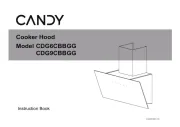
4 Juli 2025
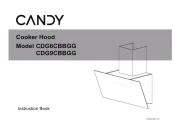
4 Juli 2025
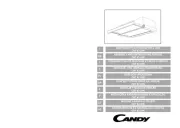
4 Juli 2025
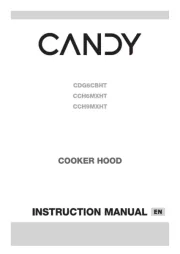
16 Juni 2025
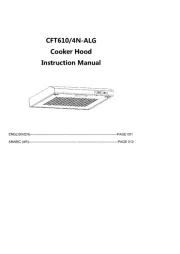
15 Juni 2025
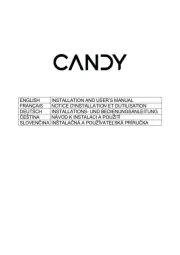
24 Maart 2025

31 Juli 2024

31 Juli 2024

30 Juli 2024

30 Juli 2024
Handleiding Afzuigkap
- Halifax
- Imperial
- Hoover
- Thor
- Qasair
- Arctic Cooling
- Bertazzoni
- Edesa
- OK
- Trade-Wind
- Ariston Thermo
- Stoves
- SIBIR
- Artusi
- Pando
Nieuwste handleidingen voor Afzuigkap
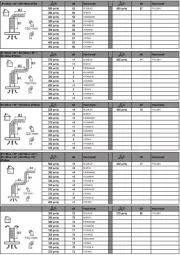
29 Juli 2025
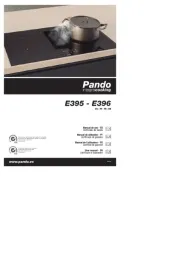
29 Juli 2025
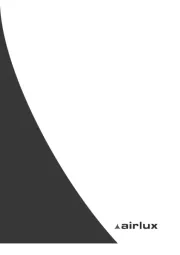
29 Juli 2025
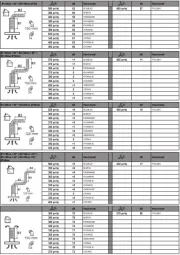
29 Juli 2025
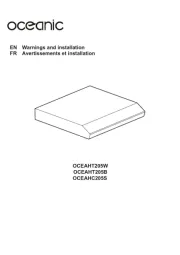
29 Juli 2025
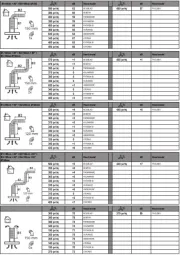
29 Juli 2025
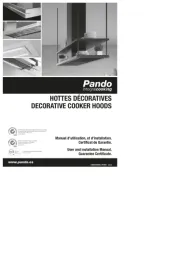
29 Juli 2025
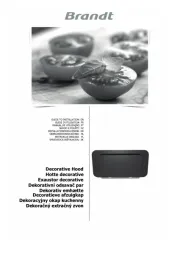
29 Juli 2025
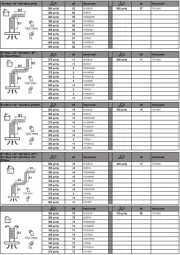
29 Juli 2025
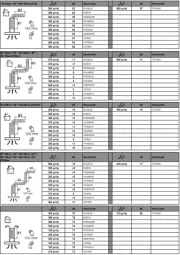
28 Juli 2025